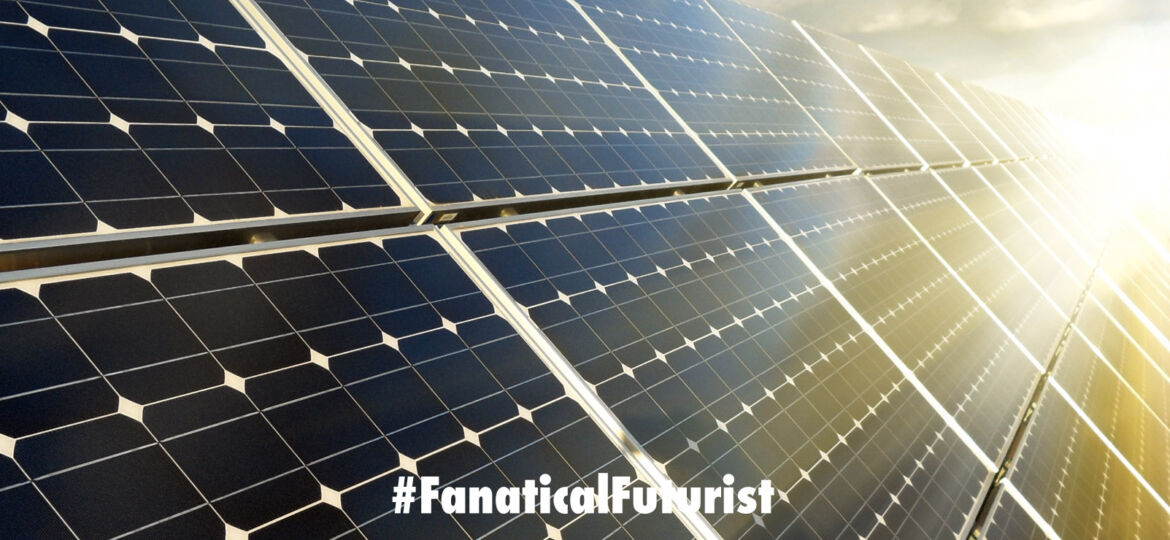
WHY THIS MATTERS IN BRIEF
The rise of renewable energy is on a tear, and it’s now looking unstoppable.
Global wind and solar developers took 40 years to install their first trillion watts of power generation capacity, and, as electric vehicles get ready to take off, and as renewables surge to become the cheapest form of energy in more than 58 countries around the world, the next trillion may be finished within the next 5 years, which would be a staggering feat. Furthermore, as we continue to see the development of new types of renewable energy technologies such as bacterial solar panels and solar panels that work in the rain, and continue to see solar efficiency records tumble, we may soon be able to realise another milestone – the utopia of zero cost energy.
That’s the conclusion of research by Bloomberg New Energy Finance (BloombergNEF), which estimated the industry reached the 1-terrawatt milestone sometime in the first half of this year. That’s almost as much generation capacity as the entire US power fleet, although renewables work less often than traditional coal and nuclear plants and therefore yield less electricity over time.
The findings illustrate the scale of the green energy boom, which has drawn $2.3 trillion of investment to deploy wind and solar farms at the scale operating today. Bloomberg estimates that the falling costs of those technologies mean the next terrawatt of renewable energy capacity will cost about half as much, or $1.23 trillion, and arrive sometime in 2023.
“Hitting one terrawatt is a tremendous achievement for the wind and solar industries, but as far as we’re concerned, it’s just the start,”said Albert Cheung, Bloomberg’s head of analysis in London. “Wind and solar are winning the battle for cost-supremacy, so this milestone will be just the first of many.’’
The world had a total of about 6.2 terrawatts of installed capacity in 2016, about 1 terrawatt of that being coal plants in China, according to the research group. Like all milestones, reaching 1 terrawatt is an arbitrary mark that scratches the surface of the debate about how much renewables will contribute to the world’s future energy system.
Each power plant works at a different “capacity factor,’’ a measure capturing both the efficiency of the facility in generating electricity and how often it works. On average, wind farms have a capacity factor of about 34 percent worldwide, meaning they work about a third of the time, according to Bloomberg. Some of the best sites have factors above 60 percent. For solar photovoltaics that track the sun, those readings range from 10 percent in the UK to 19 percent in the US and 24 percent in Chile’s Atacama desert. By comparison, coal plants have a 40 percent capacity factor and nuclear sometimes double that.
Even so, the terrawatt of installed capacity for renewables marks substantial growth for an industry that barely existed at the start of the century. More than 90 percent of all that capacity was installed in the past 10 years, reflecting incentives that Germany pioneered in the early 2000s that made payouts for green power transparent for investors and bankers alike.
Asian nations absorbed 44 percent of the new wind and 58 percent of solar developments to date, with China account for about a third of all those installations.
Wind made up 54 percent of the first terrawatt but solar is expected to overtake wind in early 2020. China has led the world in installing solar power over the last five years holding 34 percent of global solar capacity and it’ll continue to be the world’s largest market for both power sources, reaching 1.1 terrawatts in the country by 2050.
“As we get into the second and third terrawatts, grid scale energy storage, such as the platform built by Elon Musk in Australia, is going to become much more important,’’ Cheung said. “That’s where we see a lot of investment and innovation right now.’’
Source: Bloomberg
















